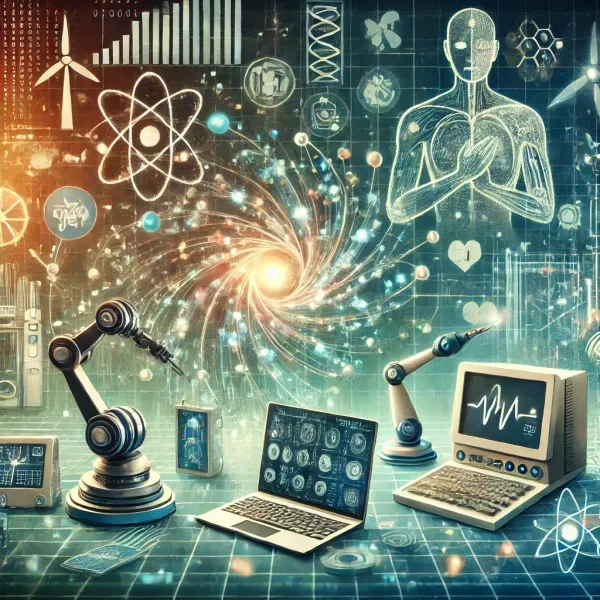
Fundamental Insights
- Technology is a dynamic manifestation of human cognitive capabilities
- It represents our species' most powerful problem-solving mechanism
- Technological development is intrinsically linked to human evolution
- Understanding technology requires a multidimensional perspective
Philosophical Origins: Technology as Human Extension
Technology is not merely a collection of tools or machines—it's a profound expression of human intelligence and creativity. From the moment our ancestors crafted the first stone tools, technology has been humanity's primary mechanism for adapting to and transforming our environment.
"Technology is the bridge between human imagination and practical reality, where conceptual thinking meets tangible transformation." - MAKB
Etymological Roots and Conceptual Understanding
The term "technology" originates from the Greek words "techne" (art, craft) and "logos" (study or reasoning). This etymology reveals technology's deeper meaning: a systematic approach to solving problems through creative and rational methods.
Core Technological Dimensions
- Cognitive Dimension: Technology as an extension of human mental capabilities
- Practical Dimension: Tools and systems that solve real-world challenges
- Evolutionary Dimension: Continuous adaptation and innovation
- Ethical Dimension: Balancing technological progress with societal values
Historical Technological Paradigms
Prehistoric Technological Emergence
The first technological innovations were survival mechanisms. Stone tools, fire manipulation, and basic agricultural techniques represented humanity's initial technological breakthroughs. These weren't just tools, but cognitive extensions that dramatically expanded human capabilities.
Transformative Technological Eras
- Agricultural Revolution: Transition from hunter-gatherer to settled societies
- Industrial Revolution: Mechanization and mass production
- Digital Revolution: Information processing and global connectivity
- Emerging Technological Frontier: AI, biotechnology, quantum computing
Technological Domains: Beyond Traditional Categorization
| Technological Domain | Core Purpose | Transformative Potential |
|---|---|---|
| Mechanical Technology | Physical task optimization | Automating complex physical processes |
| Information Technology | Knowledge processing and communication | Global information exchange and analysis |
| Biotechnology | Biological system manipulation | Healthcare, agriculture, and human enhancement |
| Quantum Technology | Computational paradigm shift | Solving previously intractable problems |
Societal and Philosophical Implications
Technology is not a neutral force but a complex, value-laden system that reflects and shapes human societies. It embodies our collective intelligence, ethical frameworks, and aspirations for progress.
Critical Technological Considerations
- Balancing innovation with ethical responsibility
- Ensuring technological benefits are equitably distributed
- Maintaining human agency in technological development
- Addressing potential unintended consequences
Future Technological Trajectories
Emerging technologies like artificial intelligence, quantum computing, and biotechnology are not just incremental improvements but potential paradigm shifts that could fundamentally reimagine human capabilities.
Philosophical Reflections on Technology
Is technology autonomous?
Technology is a human-driven process, reflecting our collective intelligence and values.
Can technology solve all human problems?
Technology is a powerful tool, but it requires thoughtful, ethical application to address complex challenges.
How do we ensure responsible technological development?
Through interdisciplinary collaboration, ethical frameworks, and continuous critical reflection.
Conclusion: Technology as Human Potential
Technology represents humanity's most profound mechanism for understanding, adapting, and transforming our reality. It is simultaneously a mirror reflecting our current capabilities and a window into potential futures.
Explore Deeper Technological Insights
- Technological Evolution: A Comprehensive Journey
- Ethical Dimensions of Technological Innovation
- Emerging Technologies Reshaping Human Experience
Comments